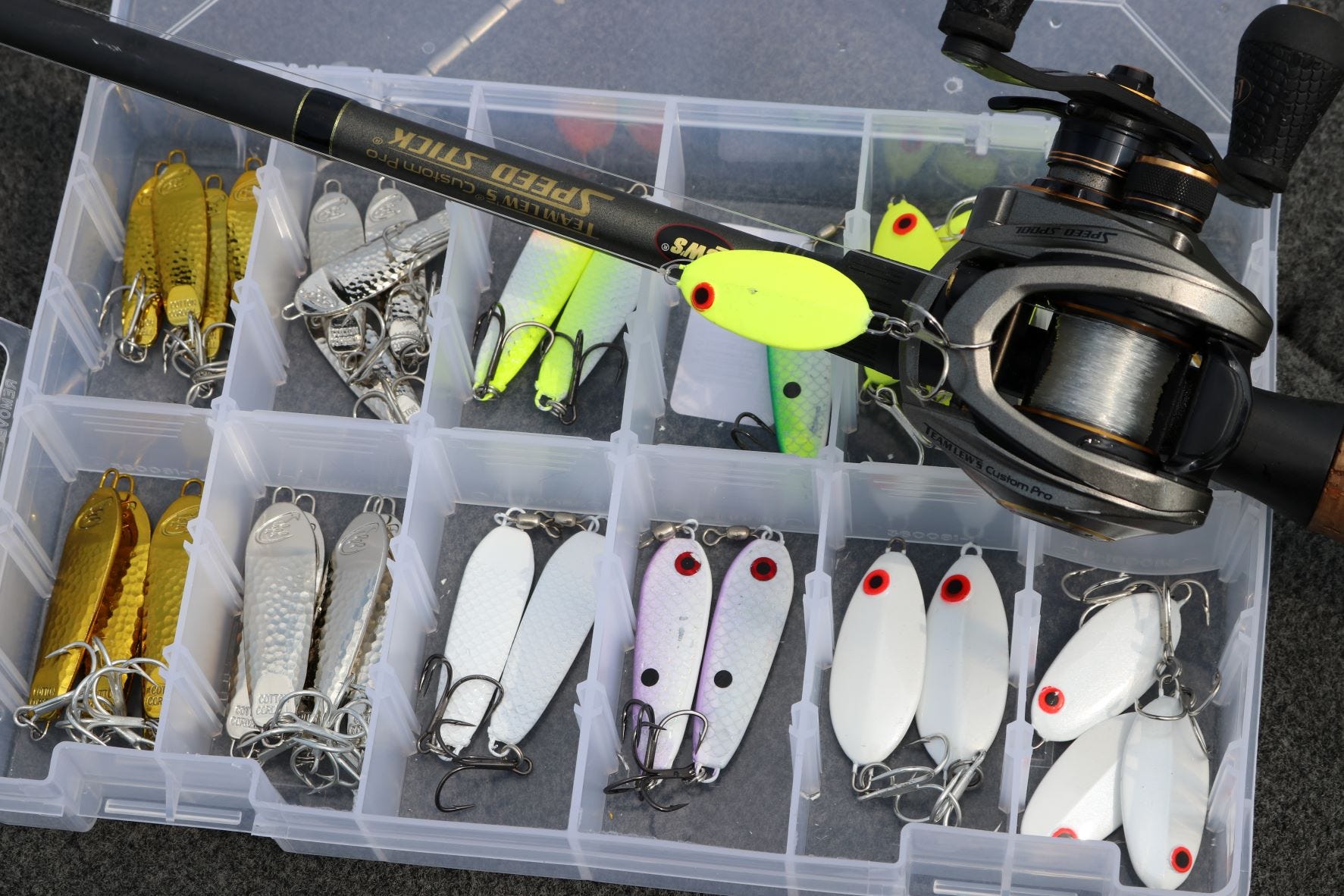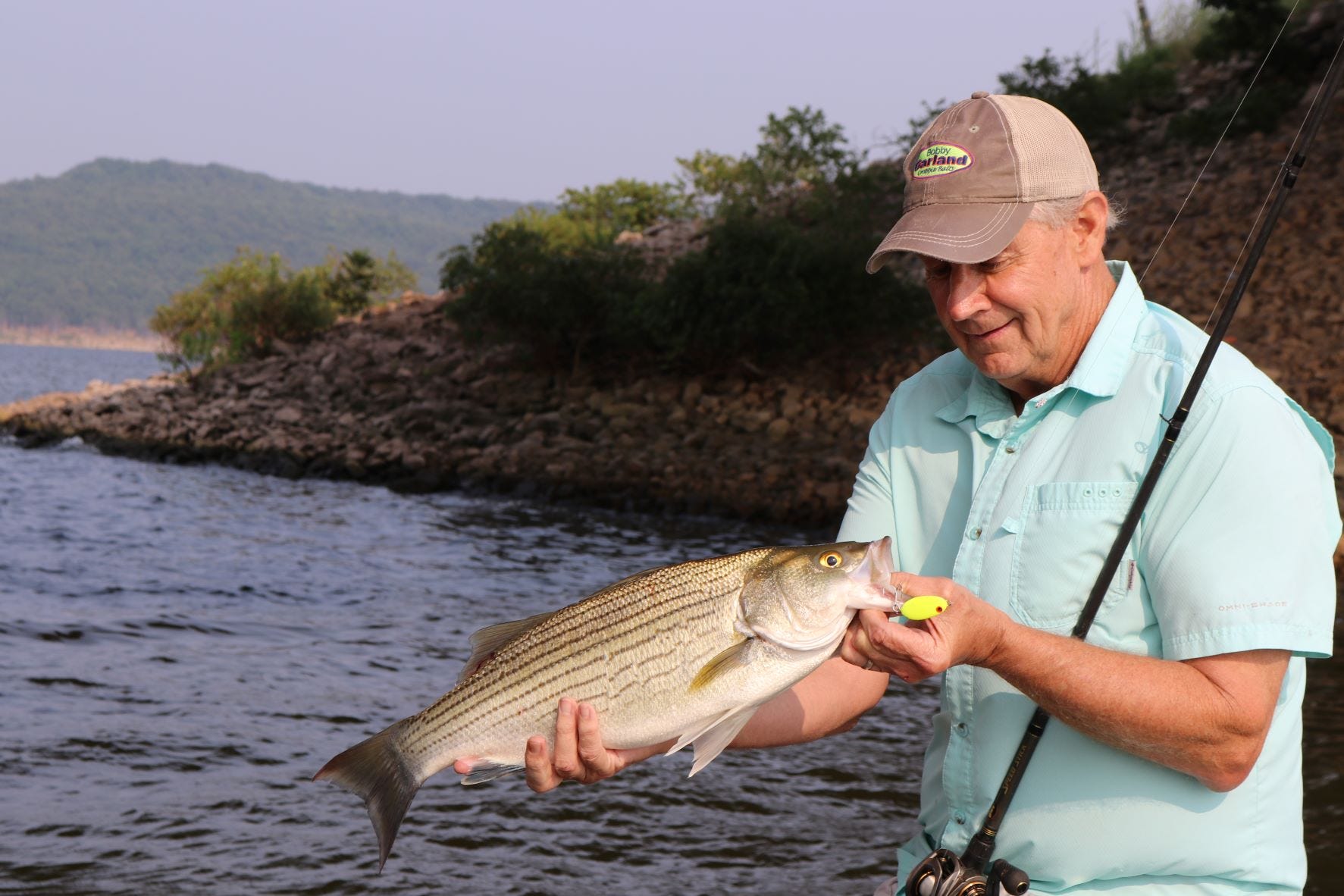- Aug 12, 2021
5 Proven Spoon Presentations for Summer Stripers, Hybrids & White Bass
Don’t buy into summer doldrums talk. Late summer offers some of the best jigging spoon action of the year, with a range of presentations prompting excellent fish-catching action.
First a disclaimer: If you don’t like multi-species fishing and always need to know what’s at the end of your line, the summer spoon bite might not be for you. While you can target stripers, white bass or hybrids based on waterways and locations and typically will catch more of the target species than fish of other kinds, it’s not uncommon to catch 10 species in a day with a summer spoon-fishing approach, and any fish that wallops a spoon could turn out to be a 1-pound crappie or a 50-pound flathead.
That noted, jigging spoons provide spectacular opportunities to catch the “true bass” species (stripers, white bass and striper/white bass hybrids) during late summer, when these fish are chasing big schools of shad and herring in open water. Jigging spoons “match the hatch” very effectively and have built-in versatility that makes them solid matches for most summer scenarios with these species.
Versatility related, it’s important to dispel the notion that heavy metal spoons are only for vertical jigging. This common misconception is understandable – both because of the popular name “jigging spoon” and because their weight and design make them so effective for vertical jigging. However, to overlook other presentations and techniques for working the entire water column is to miss a host of fabulous fish-catching opportunities.
We’ll look at five top spooning presentations for stripers, white bass and hybrids, digging into when to turn to each.
1) Slabbing, Texoma-Style
Few waterways are more closely associated with spoons and striped bass than Lake Texoma, which spreads across 89,000 acres along the Texas/Oklahoma border.
“It’s the old way to fish for them and all we used to do – and it still works,” said Chris Caldwell, who has been guiding on Lake Texoma for 42 years. Caldwell (580-564-7177) currently fishes primarily with live bait for guide parties, but a recent day with him on the big lake proved that the stripers still can’t resist a Bomber Slab Spoon, and we witnessed several other striper anglers using spoons and bringing stripers into the boat.
Because of the rich local history of Bomber Lures and the Slab Spoon, locals refer to spoon fishing on Lake Texoma as “slabbing,” no matter what kind of spoon they are fishing.
And while spoons get fished various ways, the most consistently effective approach, and what is most commonly dubbed slabbing, is to drop the spoon to the bottom or to just below a school of suspended stripers and burn back to the surface. No jerks. No pauses. Just reel quickly and hang on. Hang on tight, by the way, because strikes tend to be decisive!
“They’re down there chasing shad. Burning the spoon makes it look like a shad trying to get away, and that makes stripers attack,” Caldwell said.
Because this approach calls for positioning a boat directly over the fish, catching stripers begins with finding them, and there’s no easy answer to where they’ll be because stripers roam constantly during summer, following schools of open-water baitfish. Knowledge of areas the fish have been used, whether gained by days on the water or from tackle shop or marina reports, provides a solid starting point, but finding fish calls for searching with electronics and watching for visual signs.
Caldwell always watches for surface-schooling stripers this time of year. The schoolers on Texoma are almost never the size of fish Caldwell seeks for clients, but the “right fish” are commonly suspended below the schooling fish, and his graph reveals whether that is the case.
2) School Casting
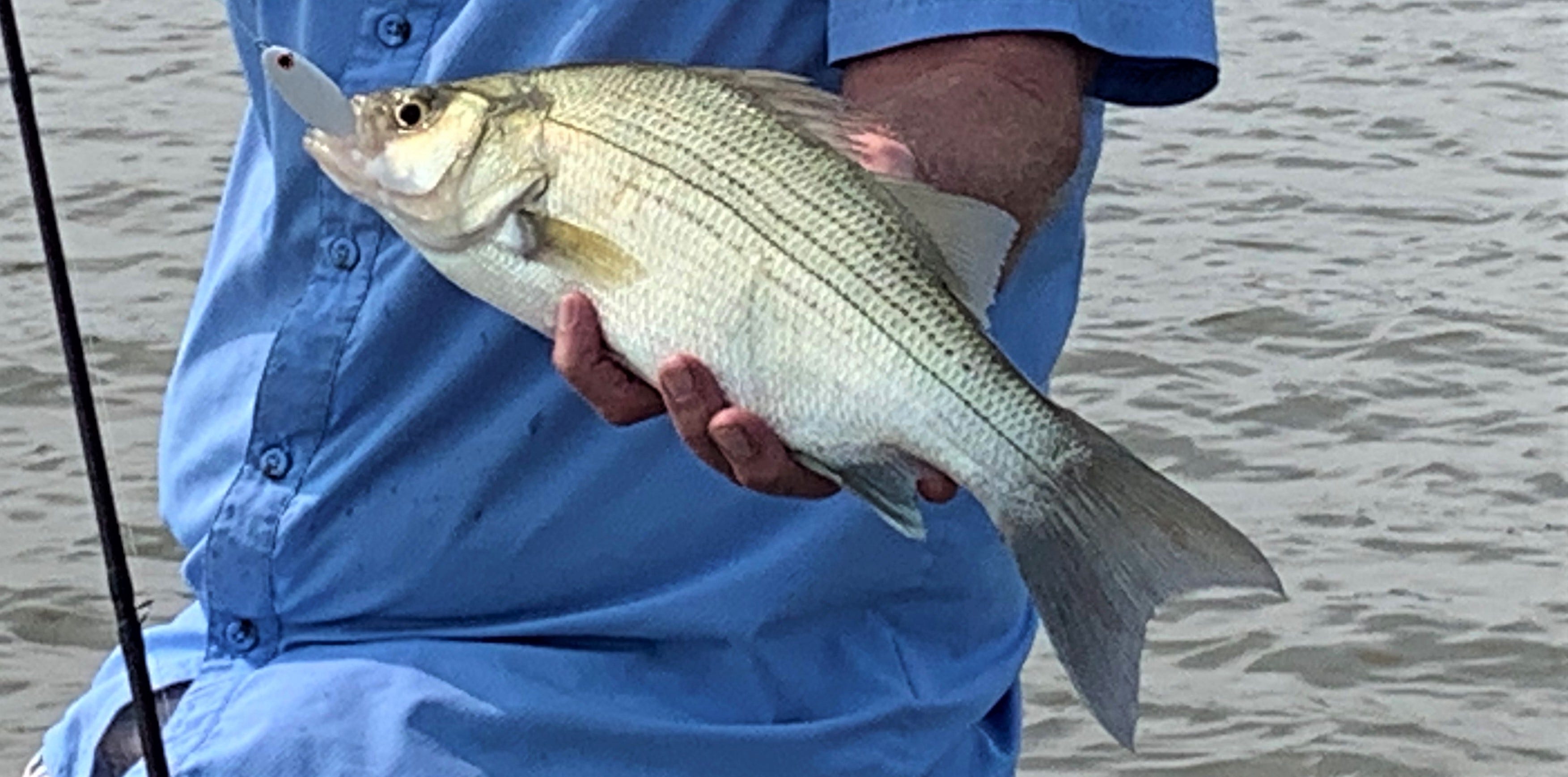

Speaking of schooling fish, white bass, hybrids and stripers all commonly school on the surface during late summer and continuing into fall on many lakes and rivers, with specific timing and frequency varying by baitfish make up, whether the lake stratifies and water conditions. Heavy spoons, including Slab Spoons, Cotton Cordell C.C. Spoons and War Eagle Jigging Spoons, rank among the best lures made for casting to schooling fish and are vastly overlooked for this application.
Jigging spoons work wonderfully for casting to schools because they can be cast long distances to reach fish that come up and fished quickly to prompt reaction strikes. Spoons also send out flash, move erratically and offer a profile that suggests a fleeing shad.
Spoons also provide versatility for fishing schools. You can swim a spoon quickly, with the rod tip high to keep it right at the surface, or slow it just enough to keep it a few feet down, where larger fish sometimes wait.
You can also swim a spoon steadily or add twitches, lifts or pauses to alter the action. Because presentations are generally fast, you can mix things initially and figure out the fish’s presentation preferences in short order. Best of all, you can change things up substantially, in terms of action levels of the water column without having to repeatedly switch lures.
3) Vertical Jigging
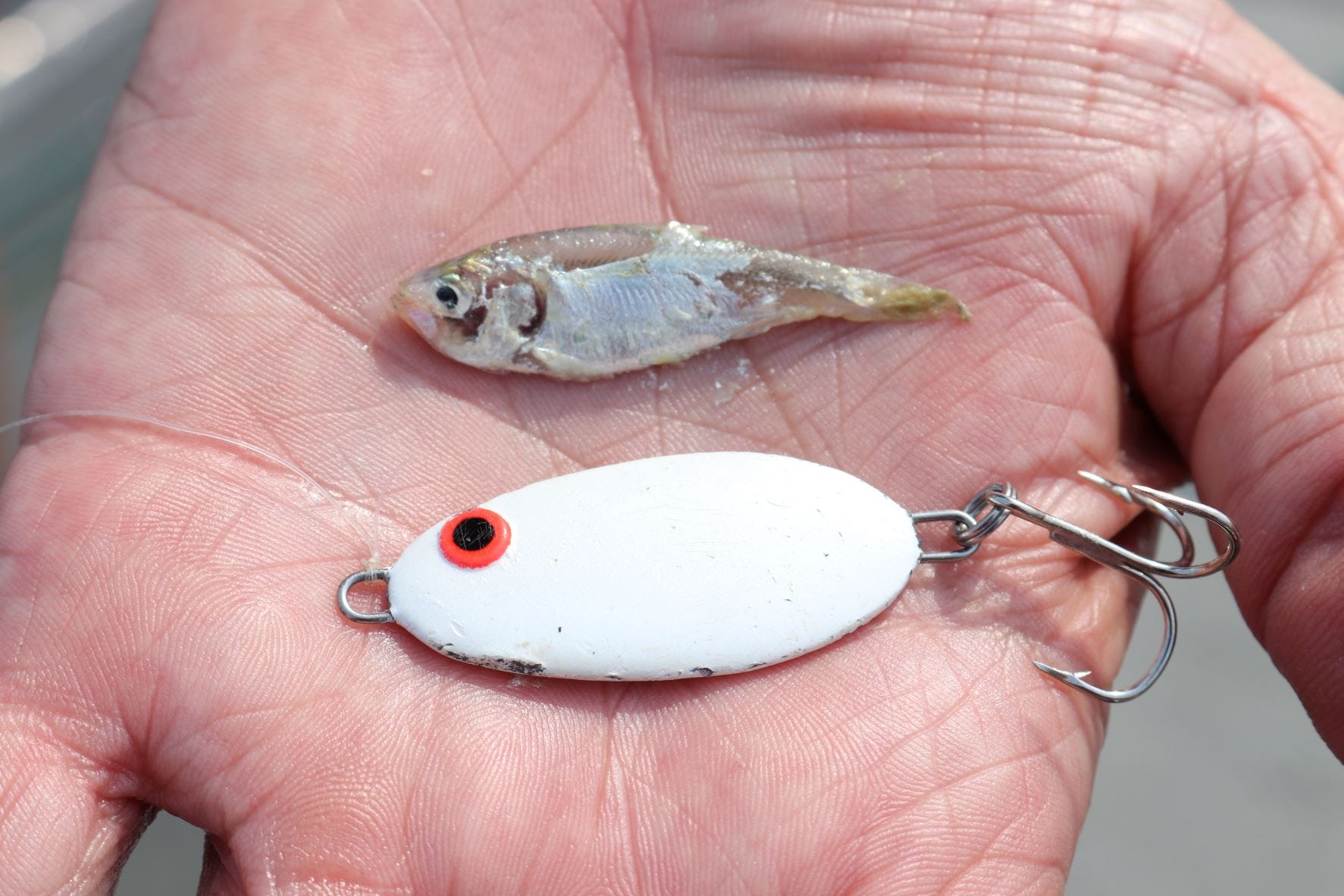

When fish are on near the bottom and you have them located, it’s tough to top the efficiency of dropping a spoon down to them and using lifts and drops to keep your offering constantly in the strike zone and repeatedly performing actions that trigger strikes.
With a slender spoon like a War Eagle Jigging Spoon or a C.C. Spoon, snapping the rod the rod upward typically produces the best action. The Slab Spoon lends itself better to a longer sweep that is more a lift than a snap. Sometimes combining a couple of snaps or shorter lifts creates a strike-prompting hesitation.
No matter how you lift the bait, it’s important to follow the spoon back down with the rod so the line stays loose enough for the spoon to flutter uninhibited but tight enough for you to see if it pauses, jumps or moves sideways.
Most fish will hit a jigged spoon the fall, so it’s important to watch the line closely and set the hook if it jumps, hesitates, moves sideways, or seems to do anything unusual. If you guess wrong and set the hook, the spoon simply jumps and flutters back to the zone, with no harm done. If you err on the side of not setting the hook, you miss the chance to catch fish.
If fish are right on the bottom, a good way to keep your bait working in the prime zone and to attract extra fish is to let the spoon pound the bottom on every drop. If fish are holding a bit higher, try dropping the spoon to the bottom but cranking the reel handle a time or two before you start jigging.
4) Bottom Hopping
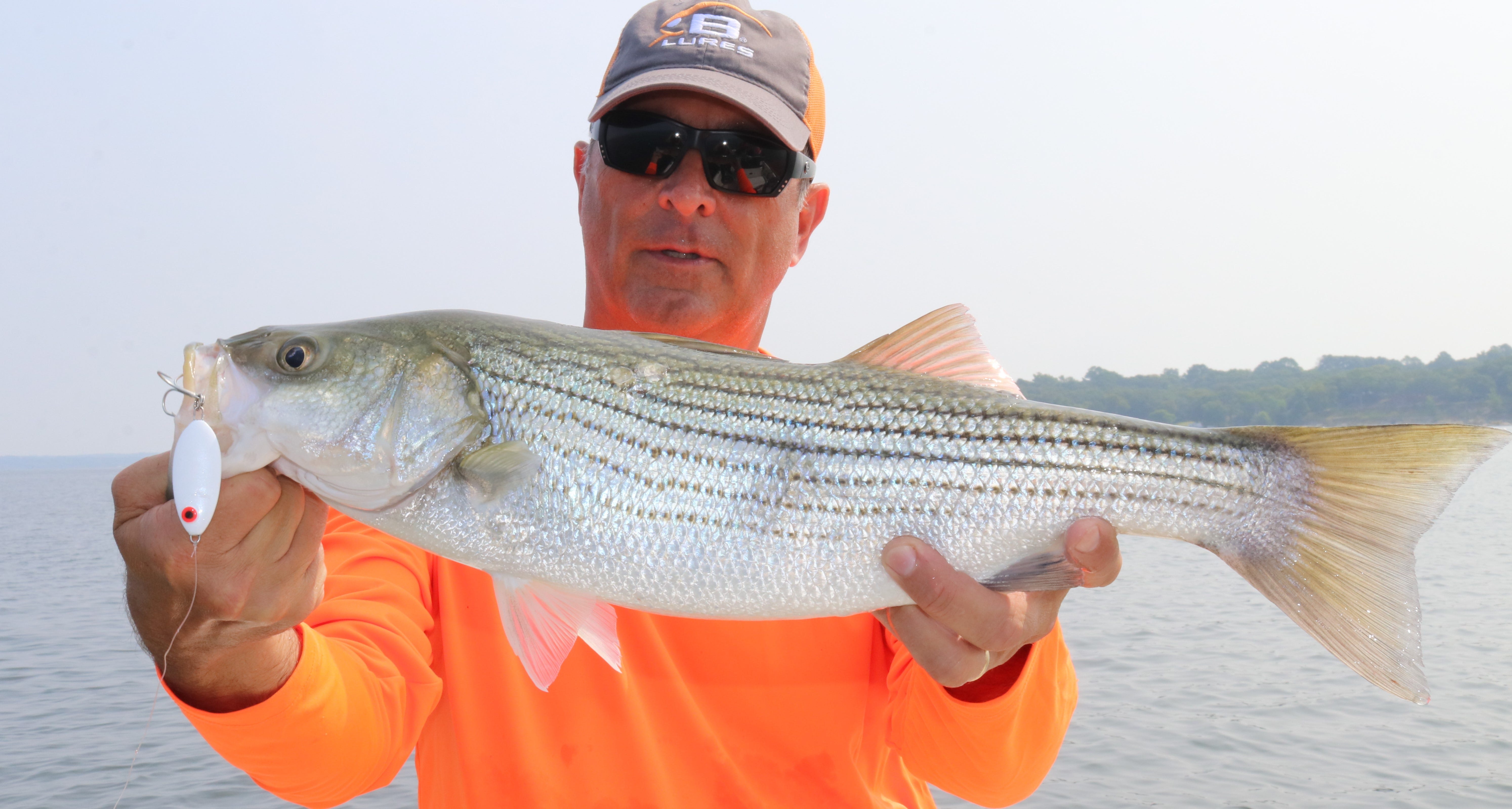

A variation of vertical jigging that allows you to work a long point, saddle, steep bank or other structural feature to find fish on the bottom is to make a long cast, allow your spoon to sink and work it back along the bottom with lifts and drops.
Unlike vertical jigging, bottom hopping is a searching strategy that allows you to cover an area instead of working a spot and lets you test a range of bottom depths. Like vertical jigging, it can be executed with long slow sweeps, shorter snaps or series of lifts that cause the bait to jump multiple times before fluttering back to the bottom.
Casting and bottom hopping also lets you work areas that are too shallow for getting on top of with your boat and to reach fish with a spoon from the shore or a fishing pier.
Because this is more of a finding strategy, it’s critical to pay attention to where the spoon is when fish bite. If multiple fish come from the same spot, you might be able to move to directly over the fish and fish vertically to keep the spoon in the zone.
That said, one more advantage of casting is the simple fact that at times fish favor a horizontal presentation, and you catch more fish by casting past them and working through them than by keeping the bait among them. I witnessed that with white bass a week ago. We were marking a big school and couldn’t prompt a strike from above. When we move off them, cast across the same school and started bouncing the spoon off the bottom, we immediately started catching fish.
5) Suspending
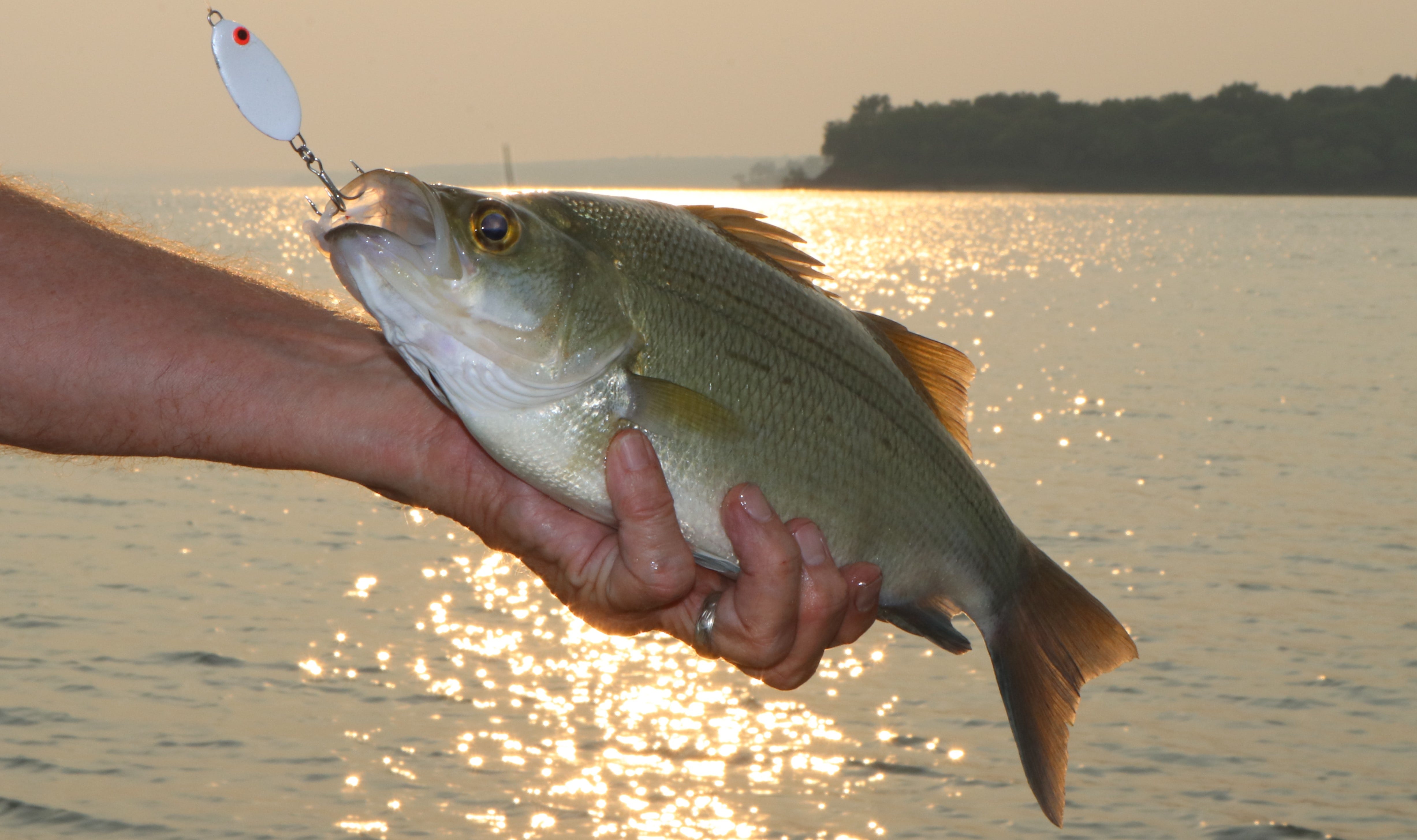

Fishing industry veteran and long-time spoon angler Gary Dollahon learned long ago that striped bass and their cousins are often neither at the surface nor on the bottom and that a jigging spoon can be highly effective for working in-between depths. In fact, he was introduced to spoon fishing in 1974 on Lake Amistad, which straddles the Texas-Mexico border, fishing Bomber Slab Spoons for big striped bass, and most fish were 40 to 55 feet deep, suspended over in 60- to 100-foot bottom depths.
During late summer, in lakes that stratify, stripers, hybrids and white bass commonly hold close to the thermocline, which is the middle layer between deep water that is a bit cooler but has too little dissolved oxygen and the top later that can get too warm for some fish to stay in but has higher DO levels. Other times, the fish suspend at the level where the most baitfish are or just below the bait. Watch electronics and pay attention to the depth range that holds the most bait and larger fish.
For vertical fishing the overall technique is the same as vertical jigging – just with the bait higher in the water column. With decent electronics, you can watch you spoon drop to the level of the fish to control depths. Lacking that technology, an easy option for controlling depth is to strip line from the reel in estimated two-foot pulls.
Dollahon often will make a cast of about the length he wants his spoon to drop and then let it pendulum down, sometimes working it as it falls, before beginning a vertical presentation.
When fish are suspended near structure (such as a bridge support or pillar), a good approach is to cast past it and let the bait fall freely or swing down initially, and then work it with lifts and drops that keep it at about the same level. That sounds like a guessing game, and to a degree, it is. However, you quickly get a feel for how quickly a spoon drops and how far it has dropped based on casts that produce the most action.
Of course, that goes back to the versatility of a spoon and the capacity to change presentations and zones, either subtly or dramatically, by altering cadences and rod movements. The most successful spoon fishermen become patterning specialists who pay attention to signs, learn from the fish, and adapt as a day progresses.
School Fishing Tips
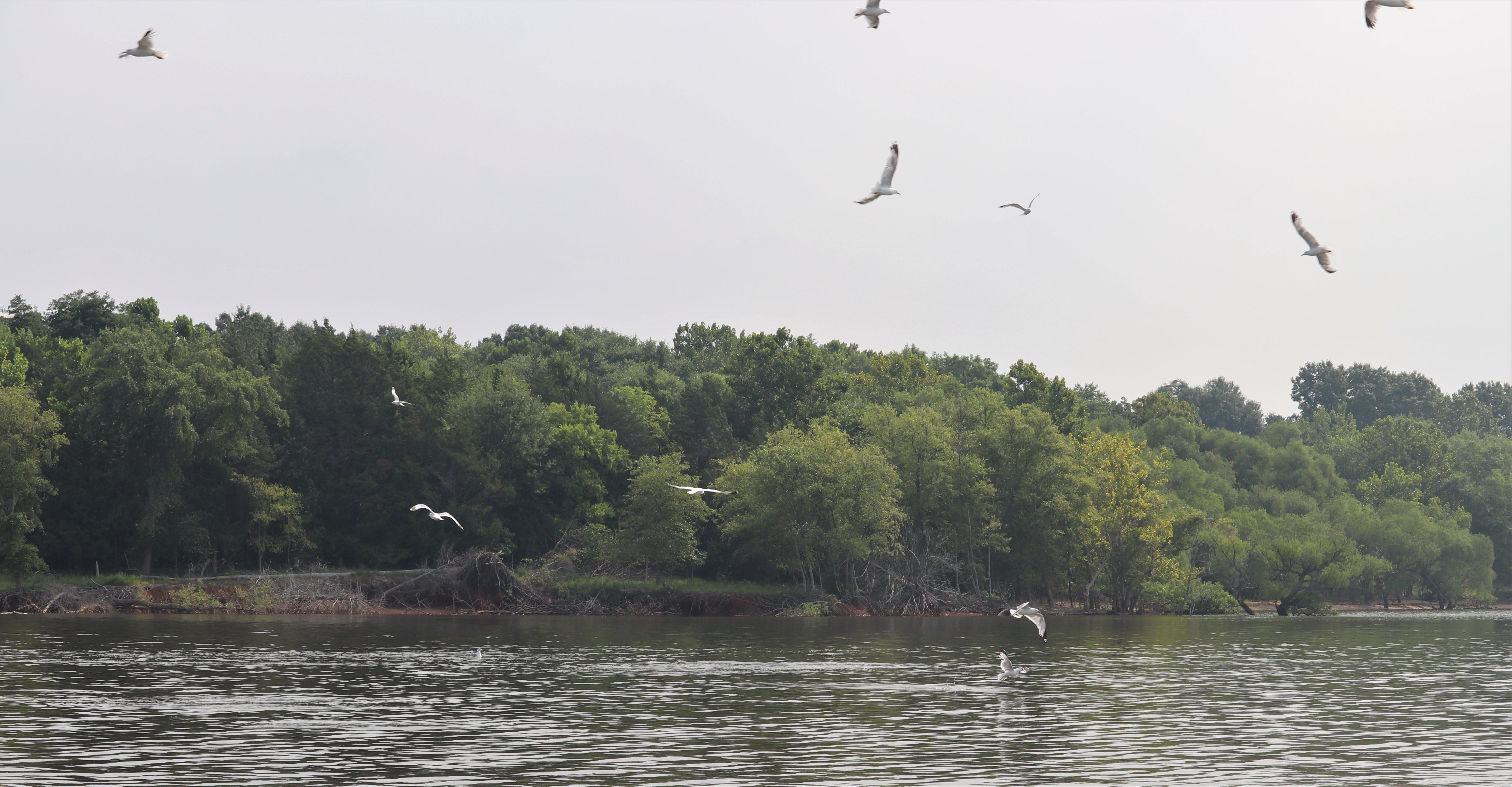

- Watch for Gulls – Plentiful seagulls in an area mean plentiful baitfish and often schooling fish. If they’re resting on the water, keep searching, but stay on the lookout. If they are flying and looking, schooling has been happening. If they congregate, circle, dive and squawk, it’s on!
- Bring Binoculars – Lengthening your range of vision can make a big difference for finding breaking fish or seeing what birds are doing in broad areas of open water.
- Stop Short! – When you approach schooling fish, turn off the big motor BEFORE you get to the school, approach with the trolling motor, and start casting before you’re quite in the fish.
- Drop Down – A big advantage of spoon fishing is that you can fish deeper. When a school goes down, they often stay in the area. Slow you’re approach and keep fishing as you watch for the next surface school. Often you’ll keep catching fish while other anglers are just searching.
- Bring Topwater – We know. This blog is about spoon fishing. Still, everyone knows it’s extra fun when schooling fish crash topwater lures, so it’s always worth having one tied on and trying it when schools come up. The new Super Spook Boyo is sized right to match late-summer shad, casts amazingly well for its small size, and has hooks and hardware that can handle hard fishing fish like stripers.
Spoons for Schooling White Bass
Spoon Options
Bomber Slab Spoon – Old-school spoon with a rounded profile that suggests a shad. Available in a 7/8-ounce and 1 ¼-ounce sizes. Metallic and opaque painted finishes. Seven colors in smaller size. Four colors in larger size.
Cotton Cordell C.C. Spoon – Traditional flat-sided jigging spoon with hammered sides for extra flash and silver and gold finishes. Four sizes range from ¾ to ¼ ounce, with the smallest model, known as the Little Mickey, having a skirted treble hook.
War Eagle Jigging Spoon – Narrow jigging spoon available in metallic and painted finishes. Equipped with a swivel and a stout treble. 7/8-ounce and ½-ounce sizes.
